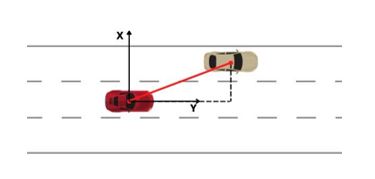
Under the Cooperative Vehicles environment, each vehicle (sender) exchanges messages with its surrounding vehicles (receivers) within the transmission range of the wireless (vehicular) network. The area including all vehicles influencing each other is called influence area of the sender. The aim of this work is to estimate the influence area of vehicles using the principles of information theory and highdefinition data collected via drones. For this purpose, we computed the mutual information between pairs of vehicles, considering their velocities as random variables. For four time periods the average mutual information between the ego-vehicle and its neighbors is computed for 20 different radius values. The radius that corresponds to the minimum of the average mutual information between the vehicle and its neighbors is considered critical. The results indicate that, in most cases, road density is a critical factor for the reliable estimation of the vehicle’s area of influence.
| ID | pc426 |
| Full Text | |
| Tags | road infrastructure |







